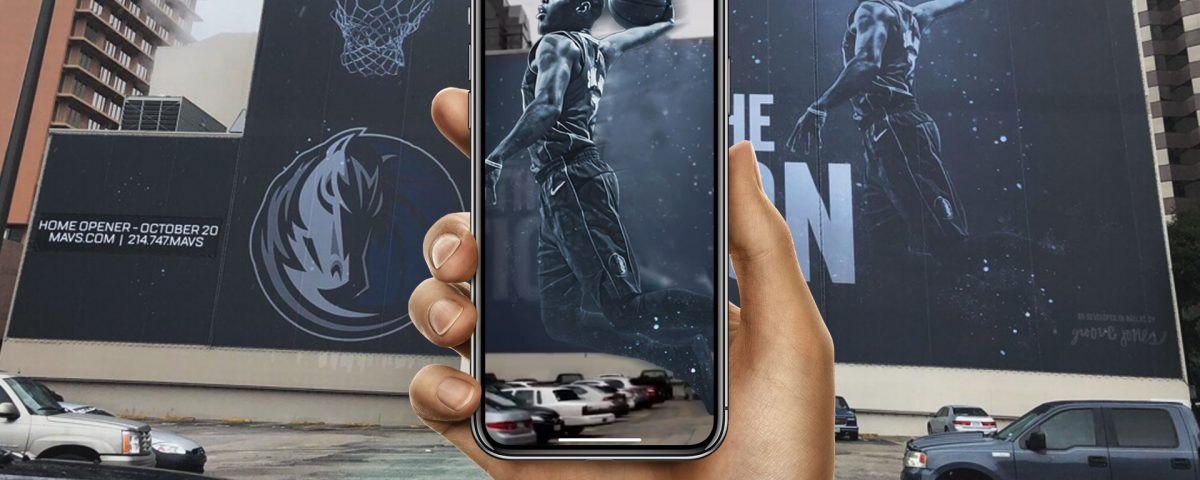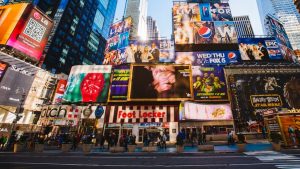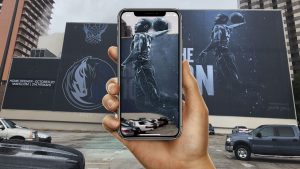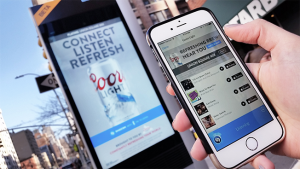Revolutionize OOH advertising with AR and AI-based enhancements
The vr programming steps to create a virtual reality product
24 December, 2019
Digitizing and digital museums are the new trend for Museum 4.0
26 December, 2019
Just as connected TVs and smart speakers are changing the way brands reach home consumers, that’s why AR and other AI-based innovations for outdoor advertising.

The innovation of OOH outdoor advertising with AR
Notably, at the time of advertising spending is flowing from traditional advertising channels to digital media. OOH Advertising is a particularly long-term physical format anchored in the real world. Netflix, for example, recently made a $ 300 million bid to buy Outdoor Advertising, as the streaming giant plans to increase marketing spending to $ 2 billion this year. to better promote its original content.
According to data from Magna Global, OOH ad revenue (excluding movies) worldwide increased by 3% in 2017, reaching an all-time high of $ 29.5 billion. Growth is entirely concentrated in the digital OOH segment, as revenue from OOH displays, especially shipping and street furniture products, is growing by 16%.
Arguably the oldest and most enduring format of mass advertising. OOH ads are ready for a digital transformation beyond replacing billboards with screens. In particular, the rise of augmented reality and other AI-controlled technologies creates interesting opportunities for the OOH advertising industry.
AR brings a new interactive dimension to OOH ads
At Google’s annual developer conference, they introduced a new AR feature added to the virtual search engine Google Lens, allowing users to scan a poster with an Android phone camera and receive more information and content. covered in a virtual classroom through poster. For example, if you scan a poster for a pop star’s concert, you get the top pop music video in a virtual window. This feature indicates a near future when every OOH poster and advertisement can be enhanced by AR technologies with additional content and related information.

Breakthrough of outdoor advertising with augmented reality technology
Another AR feature that Google announced last week was to add AR-based navigation and local exploration to Google Maps, making it easier for users to find their way to a destination and explore nearby local businesses with information. virtual. It’s not hard to imagine how Google could leverage its user data to launch a new AR ad product that flexibly replaces all OOH tables and displays with ads tailored to the department. like personally when in AR mode.
A bit of hesitation before most choose new AR features and how to use them. However, once smart glasses become effective consumer devices, AR becomes the default.
The inevitable trend of advertising
Despite the recent upgrade from print advertising to digital displays, OOH ads are basically still a real estate business – it’s all about the location and the space available. There are many digital billboards in Times Square, but that number is still limited. Therefore, the great advantage of using location-based AR in OOH is that it can avoid the provisioning problem by not only creating virtual space for advertisers but also enhancing the relevance of each ad. The ad is displayed.
Of course, AR ad placement will have to be done in moderation, for fear that we will turn our world into a dystopia full of three-dimensional ads everywhere we look.

Augmented reality is the best technology for advertising
On the other hand, adopting wearable AR could eventually lead to ad blockers always turned on for the real world, where all OOH ads are filtered out of sight indiscriminately. We have seen a significant increase in ad blocker usage over the past few years, including a 30% increase worldwide in 2016. Such practices can easily be switched over. the real world when wearable AR becomes a reality, causing potential trouble for the OOH industry.
Innovation is more effective for advertising
OOH ads used to be pulled on every media planner’s list because they didn’t have a clear way of measuring ROI. OOH campaigns often aim to build buzz and brand awareness. However, with the help of AR and location data, it is now theoretically possible to track impressions generated by OOH ads, especially if they call for interaction like visiting a website or broadcasting it. Additional video content.
It’s obvious to see that AR will bring profound changes to OOH ads, but that’s not even half. Just like how TVs are connected, smart speakers and other connected home devices are changing the way brands reach home audiences by enabling new interactive experiences and targeting capabilities, AR as well as other AI control technologies in OOH ads.
Target and allocate data driven in real time
This data-based approach is not limited to the way brands run their OOH campaigns. By combining AI and computer vision, even digital signage itself can become a rich interactive experience. Last year, a 790-square-meter digital display in London Circus Piccadilly Circus began tracking cars and passers-by to display targeted ads that people could interact in real time.
The screen, owned by media company OOH Landsec, used hidden cameras and identification technology to determine the style and color of cars as well as the age, gender, and emotions of pedestrians. to enable custom ads.
Advertising boards that use AI and computer vision to distinguish passing cars for custom ad serving have also appeared in Tokyo and Moscow. They represent a continuous shift in outdoor advertising from the conventional one-for-all model to a more sophisticated data-based goal. Some OOH media owners, such as Clear Channel and Outfront Media, also started announcements starting with offline exposure data by positioning their billboards to target consumers again. online, further improving the value of OOH advertising.
Reproduction of OOH in the era of driverless cars
Another AI-based innovation set to disrupt the OOH advertising industry is autonomous control. According to data from OAAA, billboards accounted for 65% of OOH’s total expenses in 2017.
It seems safe to assume that a majority of billboards are planted along highways and major streets, thus earning their impression primarily from drivers and passengers. Today, passengers rarely look out the window if they can stare at their mobile device. Once self-driving cars become a reality – and it will be sooner than people think – even drivers will no longer need to keep their eyes on the road, which can lead to a sharp decline in Notice that roadside billboards receive.
One way to combat this potential decline in OOH advertising is to reinvent media as a means of storytelling. With content playing an increasingly central role. OOH media owners can no longer afford to become a real estate company. They have to grow to become the publisher of the short entertainment experience that people will choose to look out of their car windows.
Vision and future
The AR vision and computer mentioned above can certainly help, but there are emerging technologies that can also be applied. For example, the development of parallel screen technology, which allows digital displays to project different images to viewers at different viewing angles such as tilted cards, may allow billboards on the transmission line. Reach a short story when cars pass by.

AR is increasingly used in the field of advertising
Sometimes, adding a little bit of personalization can also help attract interest. For example, Ford is set to launch the DooH campaign this July for the super 2018 Ford Mustang. Customers will be able to create their own custom Mustang logo through the online tool Pony Personalizer to get a chance to see the devices. Their design is displayed on the screen,
Although only a fraction of the total OOH ad revenue, film advertising plays an important role in the film ecosystem and enjoys fully captive audiences, rare in the context of super media. saturated, overly fragmented. But film advertising has yet to improve with cutting-edge technology, although more recent quizzes and puzzles are designed to increase audience engagement.
Makeup attributes for cinema ads
The opportunity lies within the reach of cinema advertising sellers to enhance their experience, as long as they overcome the barriers of mobile integration. By encouraging the audience to pull out the phone before the feature presentation begins, synchronizing with what they see on the screen via audio recognition, an interactive experience can actually be created to better promote businesses and retailers to help moviegoers receive special offers to boost trade.
Studios can remind moviegoers to set a calendar reminder on their phone for a movie they’re interested to watch at the end of the trailer.
Although it accounted for only 4.2% of total media spending in 2017, outdoor advertising (OOH) has a great influence on cultural brand awareness. OOH needs a unique ability to penetrate into the digital age to convey brand messages as a shared experience at scale, so they are suitable for increasing collective thinking and a sense of legitimacy for advertising brands.
OOH advertising has a bright future of growth ahead, thanks to global market opportunities with high population density during urbanization. It will continue to change and evolve, and outdoor advertising will seek to adapt and remain a viable option for brands.
